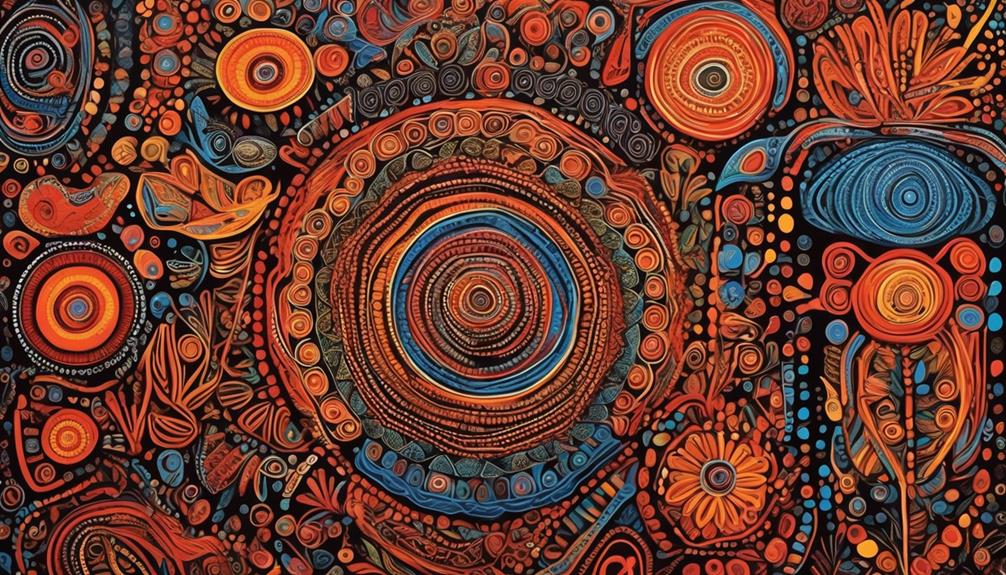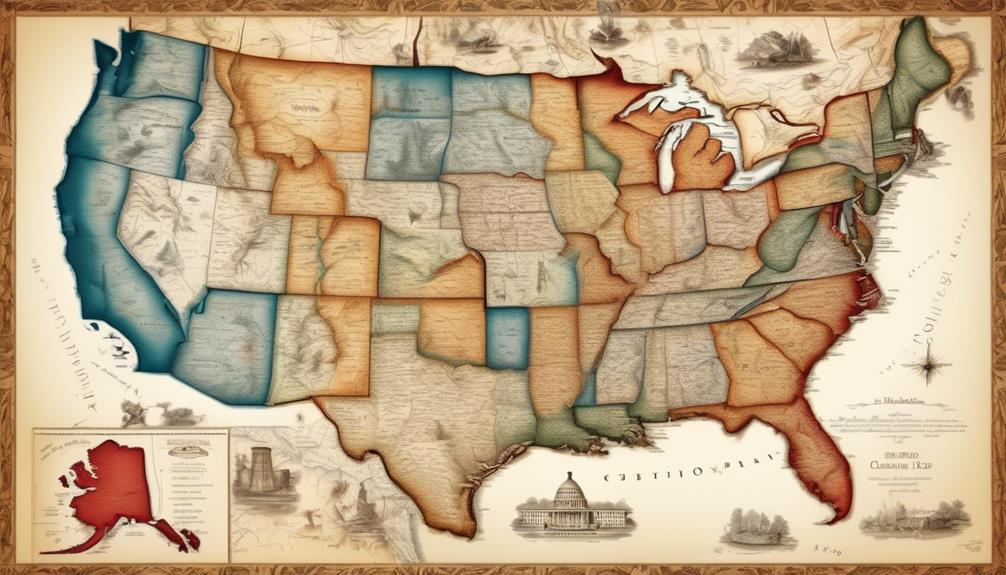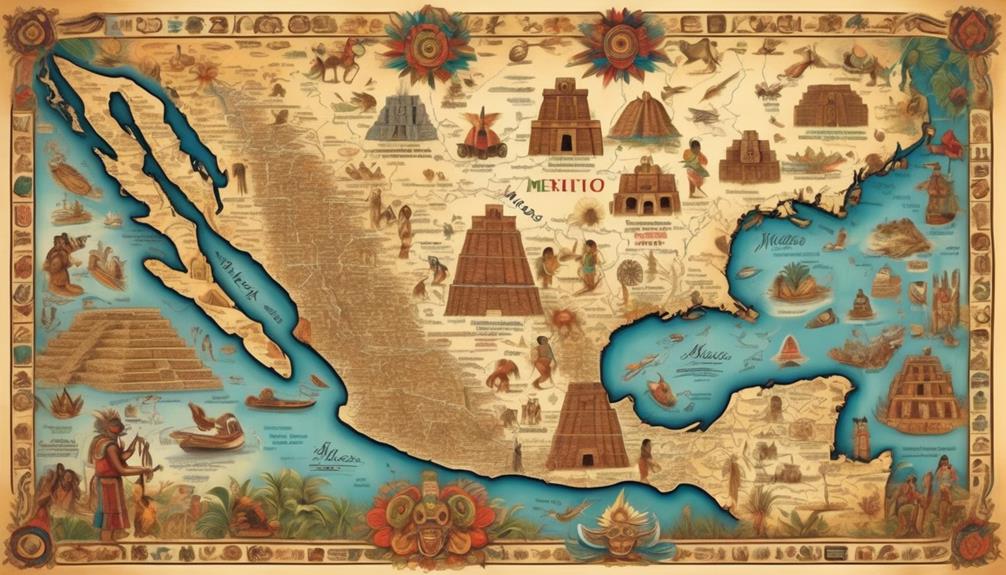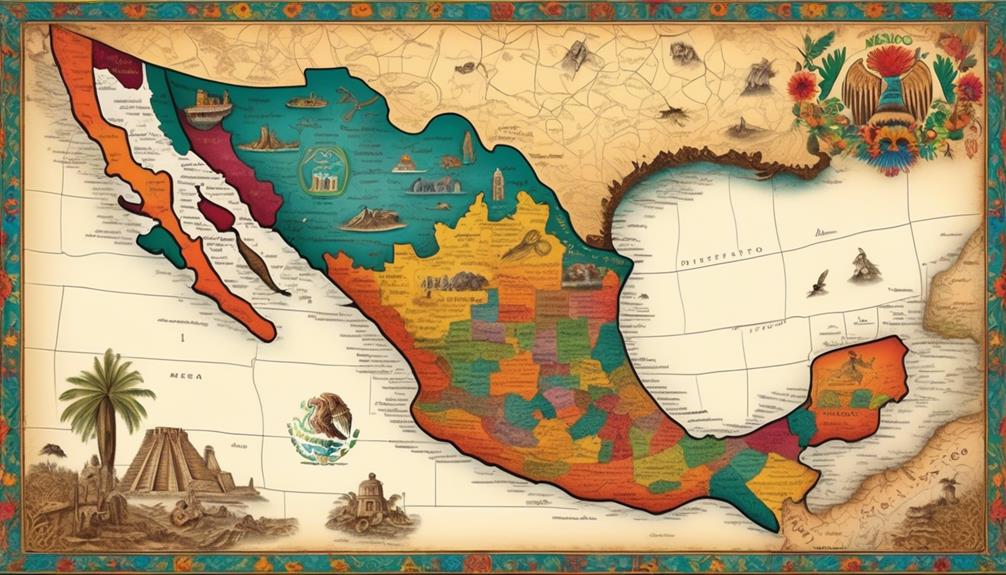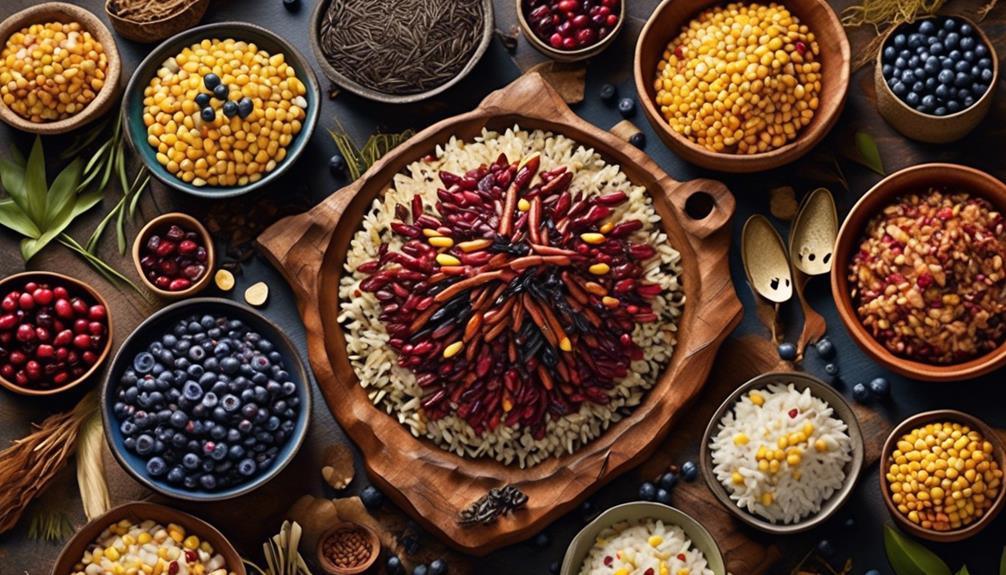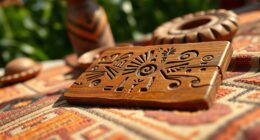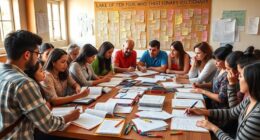When it concerns Australia’s Indigenous Aborigines, there are frequently numerous myths and misunderstandings that hinder the truth. One prevalent misconception is that all Indigenous Australians reside in isolated communities, disconnected from contemporary society. Nevertheless, this perception is merely one of several misconceptions about the lifestyles of Indigenous Aborigines.
As we explore the various aspects of their culture, history, and contributions to Australian society, it becomes essential to question what we think we know and separate fact from fiction. Join us in uncovering the truth about Australia's Indigenous Aborigines and dispelling misconceptions that have persisted for far too long.
Key Takeaways
- Indigenous Aborigines have a long history in Australia, with archaeological evidence suggesting their arrival at least 65,000 years ago, challenging previous theories of recent arrival.
- Efforts to preserve languages, storytelling, art, and practices are crucial for maintaining the unique identity and enriching the diversity of Indigenous Aborigines.
- Traditional Aboriginal beliefs and practices, such as spiritual ceremonies, Dreamtime stories, and deep connection to the land, are fundamental to their worldview and cultural identity.
- While Indigenous Aborigines have made significant contributions to Australian society, including shaping the cultural and intellectual landscape and contributing to economic development, they continue to face challenges such as lower health outcomes, disproportionate poverty, and struggles in reclaiming and maintaining traditional lands.
Origins of Indigenous Aborigines
The origins of Indigenous Aborigines can be traced back through archaeological evidence and oral traditions, providing insight into their rich and complex history. The origins debate surrounding Indigenous Aborigines centers on the timing and manner of their arrival in Australia.
Archaeological evidence suggests that the ancestors of Indigenous Aborigines arrived in Australia at least 65,000 years ago, making them one of the oldest continuous cultures in the world. This challenges previous theories that suggested a more recent arrival.
Additionally, oral traditions passed down through generations provide valuable cultural preservation, offering insights into the beliefs, customs, and practices of Indigenous Aborigines. These traditions not only contribute to understanding their origins but also serve as a means of maintaining their cultural identity and heritage.
The preservation of Indigenous Aborigines' cultural practices is essential for maintaining their unique identity and enriching the cultural diversity of Australia. Efforts to preserve Indigenous languages, storytelling, art, and traditional practices are crucial for ensuring the continuation of their rich heritage.
Traditional Aboriginal Beliefs and Practices
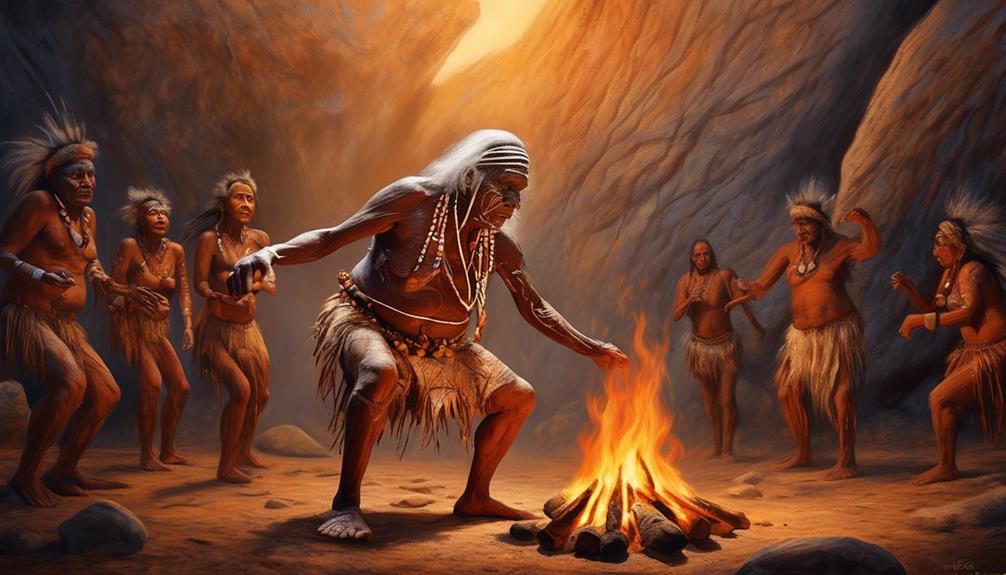
Traditional Aboriginal beliefs and practices offer further insight into the rich cultural heritage of Indigenous Aborigines, complementing the archaeological evidence and oral traditions that reveal the origins and history of this ancient culture.
- Spiritual Ceremonies: These are integral to Aboriginal culture and are conducted to maintain the balance between the physical and spiritual worlds, often involving dance, music, and art as a means of connecting with the Dreamtime ancestors.
- Dreamtime Stories: These are oral narratives that describe the creation of the world, the land, and all living things. They also serve as a guide for moral behavior and decision-making, passing down knowledge from one generation to the next.
- Connection to the Land: Aboriginal beliefs emphasize a deep spiritual connection to the land, viewing it as a living entity with its own significance and stories.
- Kinship and Totemism: Aboriginal societies are structured around kinship systems and totemic relationships, where individuals are connected to a specific totemic animal or plant, reinforcing their spiritual bond with the natural world.
These traditional beliefs and practices are fundamental to understanding the worldview and cultural identity of Indigenous Aborigines, highlighting the intricate relationship between spirituality, history, and the land.
Indigenous Aborigines' Contribution to Australian Society
Indigenous Aborigines have made significant contributions to Australian society across various fields, shaping the nation's cultural, artistic, and intellectual landscape. The cultural integration of Indigenous traditions has enriched Australia's identity, fostering a deeper understanding and appreciation of the country's heritage. From art to music to storytelling, Indigenous Aborigines have played a vital role in preserving and sharing their cultural heritage, allowing it to become an integral part of the broader Australian culture.
Economically, Indigenous Aborigines have made strides in attaining empowerment. The business acumen and entrepreneurial spirit of Indigenous communities have led to the establishment of successful enterprises, contributing to the economic development of the nation. Additionally, initiatives promoting Indigenous employment and economic participation have been pivotal in creating opportunities for Indigenous people to thrive in various industries.
These contributions haven't only added to the diversity and richness of Australian society but have also facilitated a more inclusive and equitable environment. Recognizing and celebrating the contributions of Indigenous Aborigines is crucial in fostering a united and harmonious Australian community.
Contemporary Living Conditions of Indigenous Aborigines
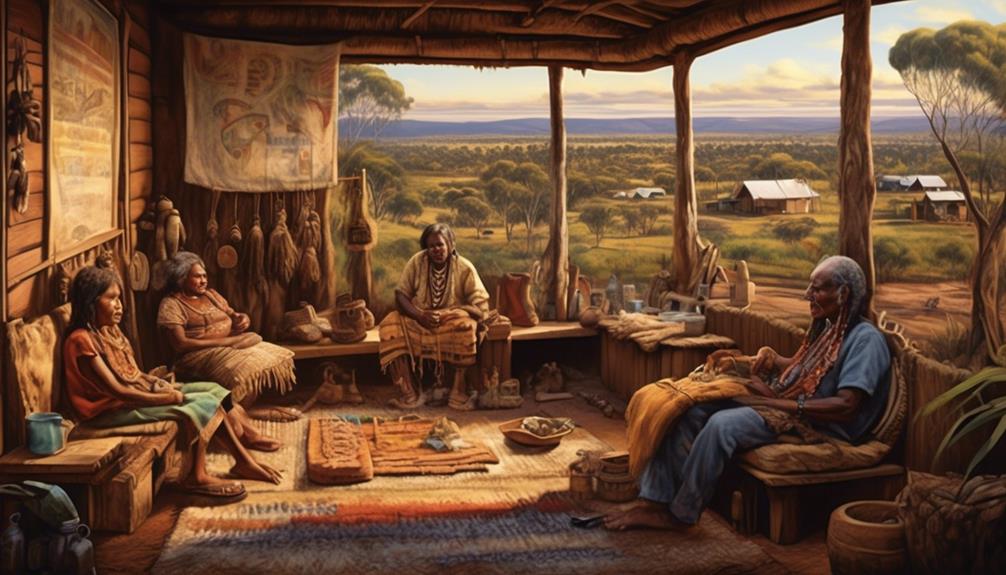
Recent studies have revealed alarming disparities in the living conditions experienced by Australia's Indigenous Aborigines. This has led to a pressing need to address the multifaceted challenges faced by this community in contemporary Australia.
- Health Disparities: The Indigenous Aborigines continue to experience significantly lower health outcomes compared to the non-Indigenous population, with higher rates of chronic diseases and shorter life expectancies.
- Socioeconomic Status: Indigenous Aborigines are disproportionately affected by poverty, unemployment, and inadequate access to education and healthcare, contributing to a cycle of disadvantage.
- Land Rights: Despite efforts to address land rights, the Indigenous Aborigines still face challenges in reclaiming and maintaining their traditional lands, impacting their cultural identity and economic opportunities.
- Cultural Preservation: The struggle to preserve and revitalize Indigenous languages, traditions, and customs remains a critical concern, as modernization and urbanization pose threats to the continuity of their cultural heritage.
These disparities underscore the ongoing need for comprehensive policies and programs to tackle the complex issues affecting the contemporary living conditions of Australia's Indigenous Aborigines.
Addressing these challenges is crucial for achieving equity and justice for this historically marginalized community.
Government Support and Recognition for Indigenous Aborigines
Amidst the persisting disparities in living conditions faced by Australia's Indigenous Aborigines, the government's support and recognition for this community are critical components in addressing their multifaceted challenges.
Government funding plays a crucial role in providing essential services such as healthcare, education, and housing in Indigenous communities. However, there are ongoing debates regarding the adequacy and distribution of this funding, with many arguing that more targeted and sustained financial support is needed to address the deep-seated socio-economic issues prevalent among Indigenous Aborigines.
Additionally, the recognition and preservation of cultural heritage are integral to the well-being of Indigenous communities. The government plays a vital role in safeguarding Indigenous cultural practices, languages, and sacred sites. Efforts to promote cultural awareness and respect, as well as the inclusion of Indigenous perspectives in policymaking, are essential for fostering a more inclusive and equitable society.
While progress has been made in some areas, there's a continued need for comprehensive and sustained government support to address the complex challenges faced by Australia's Indigenous Aborigines.
Frequently Asked Questions
How Many Different Indigenous Aboriginal Tribes Are There in Australia?
There are over 250 different indigenous Aboriginal tribes in Australia.
Each tribe has its own unique language, contributing to the richness of indigenous languages and the preservation of cultural heritage.
Land rights and sovereignty are crucial issues for these tribes, as they seek to protect their traditional lands and assert their autonomy.
It's vital to support their efforts in preserving their languages and asserting their rights over their ancestral territories.
What Is the Significance of Dreamtime Stories in Traditional Aboriginal Beliefs and Practices?
Significantly, Dreamtime stories hold immense importance and symbolism in traditional Aboriginal beliefs, showcasing the cultural significance of these narratives.
The Dreamtime stories are integral to understanding Aboriginal culture and spirituality. These stories carry profound meaning, reflecting the connection to the land and the ancestral spirits.
The Dreamtime narratives are passed down through generations, preserving the rich heritage and traditions of the Indigenous Aboriginal people.
How Have Indigenous Aborigines Influenced Australian Art and Music?
Artistic influences from Indigenous Aborigines are profound in Australian art. This can be seen in their use of traditional symbols and storytelling. In music, Indigenous Australians' musical traditions have also shaped contemporary Australian music. This is evident in the use of their unique instruments and rhythmic patterns. Both of these artistic influences reflect the rich cultural heritage of Indigenous Aborigines and their ongoing impact on Australia's artistic expression.
What Are Some of the Key Health Issues Facing Indigenous Aborigines Today?
Health disparities facing Indigenous Aborigines today are significant and complex. Chronic conditions like diabetes and cardiovascular disease are prevalent, compounded by social determinants such as poverty and inadequate healthcare access.
Cultural preservation plays a crucial role in addressing these issues, as it fosters a sense of identity and community resilience. Despite progress, the persistence of these disparities highlights the need for continued attention and action in Indigenous health.
What Specific Government Initiatives Have Been Put in Place to Support and Recognize Indigenous Aboriginal Rights and Culture?
Government initiatives to support and recognize indigenous Aboriginal rights and culture include:
- The National Indigenous Australians Agency, which focuses on policy development and program delivery.
- The Indigenous Advancement Strategy, which allocates funding to address socioeconomic disparities.
Cultural recognition efforts include:
- The inclusion of indigenous languages in education.
- The celebration of events like NAIDOC Week.
These initiatives aim to promote indigenous heritage and address historical injustices.
Conclusion
In conclusion, we've learned about the rich history and contributions of Australia's Indigenous Aborigines.
It's important to recognize and support their traditional beliefs and practices, as well as address the contemporary living conditions they face.
While there have been efforts by the government to provide support and recognition, there's still much work to be done to ensure the well-being and rights of Indigenous Aborigines.
It's time to break the chains of ignorance and embrace true reconciliation.
Mary is a passionate writer who brings creativity and a fresh perspective to our team. Her words have the power to captivate and inspire, making her an essential contributor to our content. Mary’s commitment to storytelling and dedication to promoting Indigenous culture ensures that her work touches the hearts of our readers. We’re fortunate to have her as part of our team.
